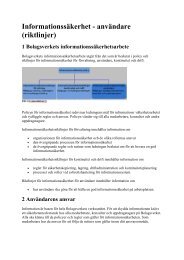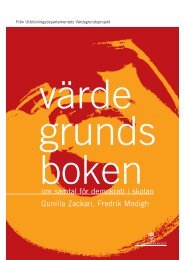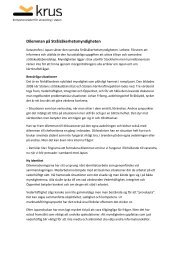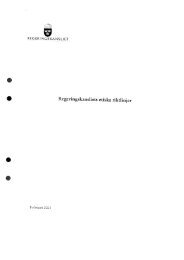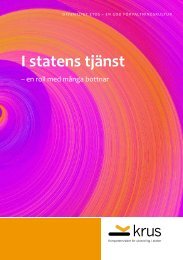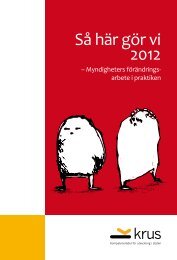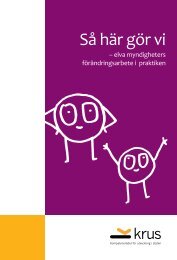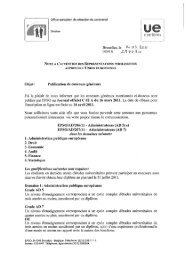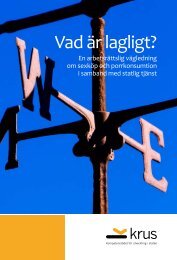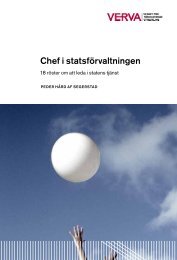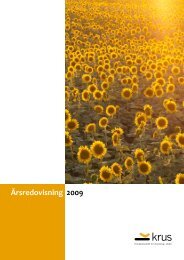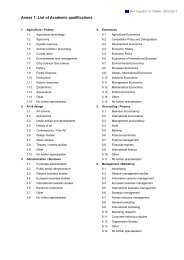Dialogkompetens i skolans vardag - Publikationer - LTU - Luleå ...
Dialogkompetens i skolans vardag - Publikationer - LTU - Luleå ...
Dialogkompetens i skolans vardag - Publikationer - LTU - Luleå ...
You also want an ePaper? Increase the reach of your titles
YUMPU automatically turns print PDFs into web optimized ePapers that Google loves.
competence in a class environment can contribute to a double feeling of marginalisation<br />
in contexts outside school. On the other hand, pupils with dialogue competence<br />
can choose to assume the role of actor in contexts in which they wish to<br />
participate, an option of importance for pupils’ self-image and identity development.<br />
As emphasised by Bergöö and Ewald (2003), communication with other<br />
people constitutes a prerequisite for social and personal development, and it is<br />
through participation in linguistic and cultural communities that children’s and<br />
young people’s self-image develops.<br />
Inclusive work must have an entrance and it is wholly possible to start in the small<br />
context. It is doubtful whether an activity can be described at all as inclusive, if<br />
not all pupils have an opportunity to develop tools for being actors in the dialogue.<br />
A route to lived inclusion may be for pupils to know how to take part in<br />
dialogues at school. Study I shows that multi-voice activities at the micro level<br />
require awareness and competence from the pupil.<br />
The teachers’ learning environments<br />
In the Dialogue project, the work of change was conducted in collaboration between<br />
five regional hard-of-hearing schools. In practical terms this meant that the<br />
cooperation took place in seven volunteer improvement groups of teachers. The<br />
groups met once per term; between the meetings, the participants exchanged experience<br />
in the form of written dialogues. The overarching aim of the project was<br />
to increase the pupils’ participation in classroom communication. Within this aim,<br />
the teachers were supposed to choose their own development questions. When the<br />
teachers’ dialogues were realised in oral and written contexts, they were used for<br />
documentation and reflection in the form of tools for learning 44 , tools that were<br />
also subjects of studies II and III.<br />
Study II<br />
Research question: How can tools used in action research promote learning in<br />
relation to Vygotsky’s concept of the zone of proximal development?<br />
44 Tools for learning in this study: logbook, shadowing, facilitation, video documentation and a<br />
web based dialogue. The term ‘shadowing’ refers to observations in the classroom made by colleagues.<br />
95



